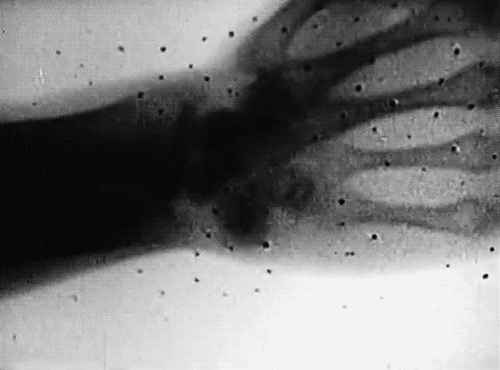CSW and Repetitive Strain Injury (RSI); good practices, stretches, and relaxation techniques

A communicator’s job is never easy and you can find yourselves working in varied and sometimes stressful situations. You will be dealing with real life situations and will need to know how to be flexible and spontaneous, whilst still maintaining in your role.
In these instances, it is important to recognise and know how to cope in these situations, so as not to cause unnecessary stress.
If stress is left to build up it can manifest itself in different ways. One of these is a condition called Repetitive Strain Injury (RSI) which is physical and health related.

Because of the nature of our job, communicators may suffer from this condition, so it is important we understand what it is, and recognise how we can take steps to ensure that this does not impact on our everyday lives.
WHAT IS REPETITIVE STRAIN INJURY (RSI)?
RSI is the medical term to describe a range of painful conditions of the muscles, tendons and other soft tissues, resulting from repetitive physical movement on a regular basis. Two of the most common injuries are called Carpel Tunnel syndrome and Tendonitis.
The reasons for these injuries occurring are due to:
-
Bad ergonomics (for example, badly designed workstations)
-
Poor posture
-
Repetitive motion for an extended period of time
-
Accumulated stress
-
Ignoring symptoms
WHAT ARE THE SYMPTOMS?

The main symptom is pain. It will probably be most noticeable when you are carrying out the activity that caused it. However, it may become so severe that it is present all of the time, even when you are resting. You may also experience:
-
Tightness, discomfort, stiffness, soreness or burning in the hands, wrists, fingers, forearms, or elbows
-
Tingling, coldness, or numbness in the hands
-
Clumsiness or loss of strength and coordination in the hands
-
Pain that wakes you up at night
-
Feeling a need to massage your hands, wrists, and arms
-
Pain in the upper back, shoulders, or neck
-
In some instances there are no visible symptoms such as swelling or inflammation
RSI: RISK TO THE COMMUNICATOR
In our everyday life we make repetitive movements. As communicators we are increasing these movements because of the nature of our job. When signing on an everyday basis, the impact of these movements can become a problem and may cause RSI.
It is vital in our jobs that the risks of RSI are kept low. This can be done by adopting good working practices, recognizing the warning signs and acting upon them at an early stage.
The three main causes of RSI for communicators are:
1. Static muscle loading
When we raise our arms to sign, our arms are not held in a relaxed position. This restricts the blood flow circulating through the muscles. This causes a reduction of oxygen and a build up of waste products in the muscles, leading to muscle fatigue.
As a communicator the muscles affected are in the neck, shoulders, upper-back and upper arms.
2. Overuse
This is the repetition of movements in tendons, joints and nerves which can cause injury. This occurs mainly in the forearms, wrists and hands for communicators.

3. Stress
Stress can occur for a number of reasons and each and every one of us will manage it differently. Whilst some people thrive under these conditions, others may find it helpful to use special techniques to manage their stress.

For example, a communicator might feel stress if they are interpreting in a situation where they feel under pressure to keep up with the pace. If prolonged, stress levels will undoubtedly increase, and may cause muscle tension and may weaken the body’s abilities to cope with further stress.
HOW TO PREVENT RSI?
When communicating it is more than likely that you will be seated throughout the job and this can cause restrictions to your muscles. When possible, standing is far more beneficial as it allows for fuller body movements and better circulation and reducing the risk of injuries to the arms.
As standing is not always realistic, it is important that we focus on how we position ourselves when seated.
-
Allow your body to be positioned in a way which allows the blood to flow freely
-
Joints should be in a neutral position - not bent or over stretched
-
Leg crossing should be avoided as the compression on the lower leg decreases blood supply. Your back will be slightly twisted, causing tension through the spine
-
When having a break, relax your arms, shoulders and elbows. Fingers and hands should not be clenched
-
Practice some desk stretches at break times, to release muscular tension. See over:

GOOD POSTURE
Good posture helps movement to be more effective with minimal stress. It allows vital organs to be in the correct position for optimum results. It is important to remember that the circulatory system and the nervous system are interlinked throughout the body, so consider the whole body when positioning yourself and when stretching, not just the hot spot areas.
Here is a simple exercise to help you find a good position for your spine:
-
Stand in front of a mirror, stretch and then relax the spine until a position is reached, that does not put strain on any part of the body. Repeat the exercise sitting down; rest both feet on the floor in a position that is comfortable and put both hands lightly in the lap.
-
Particular attention should be given to the head. It weighs 12-14lb/5-6kg and if it is not supported well or is put at an awkward angle this is likely to cause problems.
-
Migraines and head aches at the base of the head can be caused by rounding your shoulders, where the shoulder muscles are attached.
If your chest is not open properly, the space in the chest capacity is reduced, restricting oxygen to the lungs. Our organs need sufficient amounts of oxygen to work at peak condition. This is why we yawn unexpectedly when we do not seem to be tired.
A check up with a chiropractor every 6 months can be very beneficial as part of your health care.
Good posture makes you look healthier and happier. Your clothes fit better which makes a better impression on others.

RELAXATION TECHNIQUES TO HELP RELIEVE STRESSFUL STITUATIONS
Relaxation is essential when helping contribute to good health.
To help relax it is advised that we should take a break from everything and do absolutely nothing! This should not be looked upon as a waste of time. Just let your mind wonder. This allows for general thoughts to be pondered and any worrying issues to become clear.
Having restricted periods of time, rushing to complete tasks and to arrive at locations on time, is a main cause of stress.
Here is an exercise that connects breathing with muscle tension, which therefore helps you to relax. When you allow yourself that free time to do absolutely nothing, give this exercise a go...
-
Breath out all of the air from your lungs
-
Clench your muscles tightly as you take a deep breath in
-
Hold it for 2-3 seconds
-
Breath out with a leisurely sigh of relief
-
Drop your shoulders at the same time when breathing out and relax your muscles
-
Repeat this process a few times
When you are tense breathing becomes shallow, deep breathing enables muscles to relax and this releases tension.
Look after yourself and take care. There is only one of you!
FOR MORE INFORMATION:
-
RSI-UK: www.rsi-uk.org.uk
-
AbilityNet 0800 269 545: www.abilitynet.org.uk
-
RSI Action: www.rsiaction.org.uk

